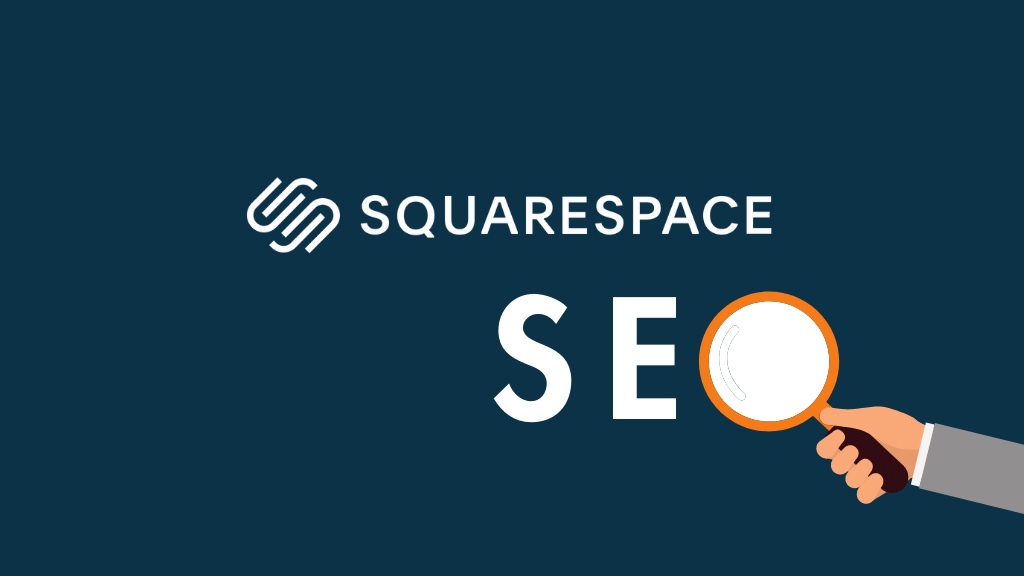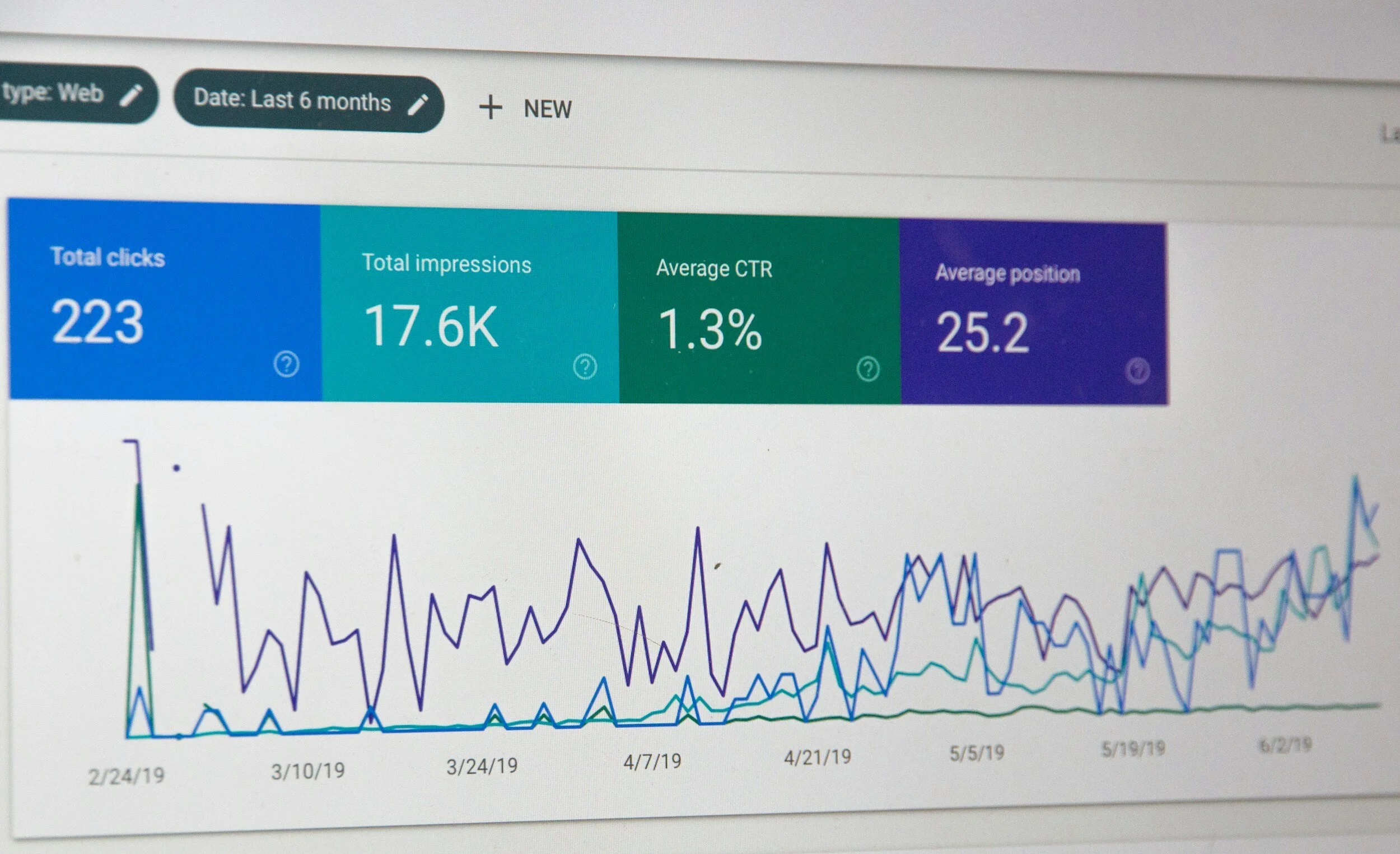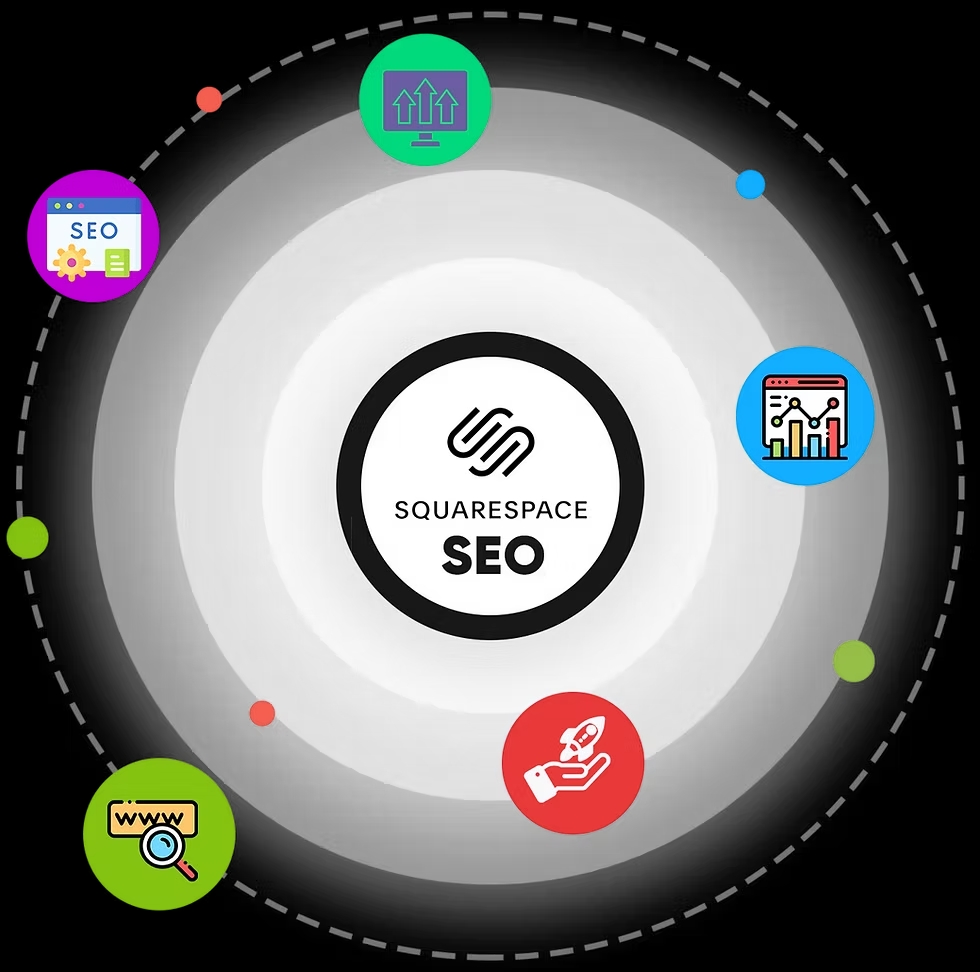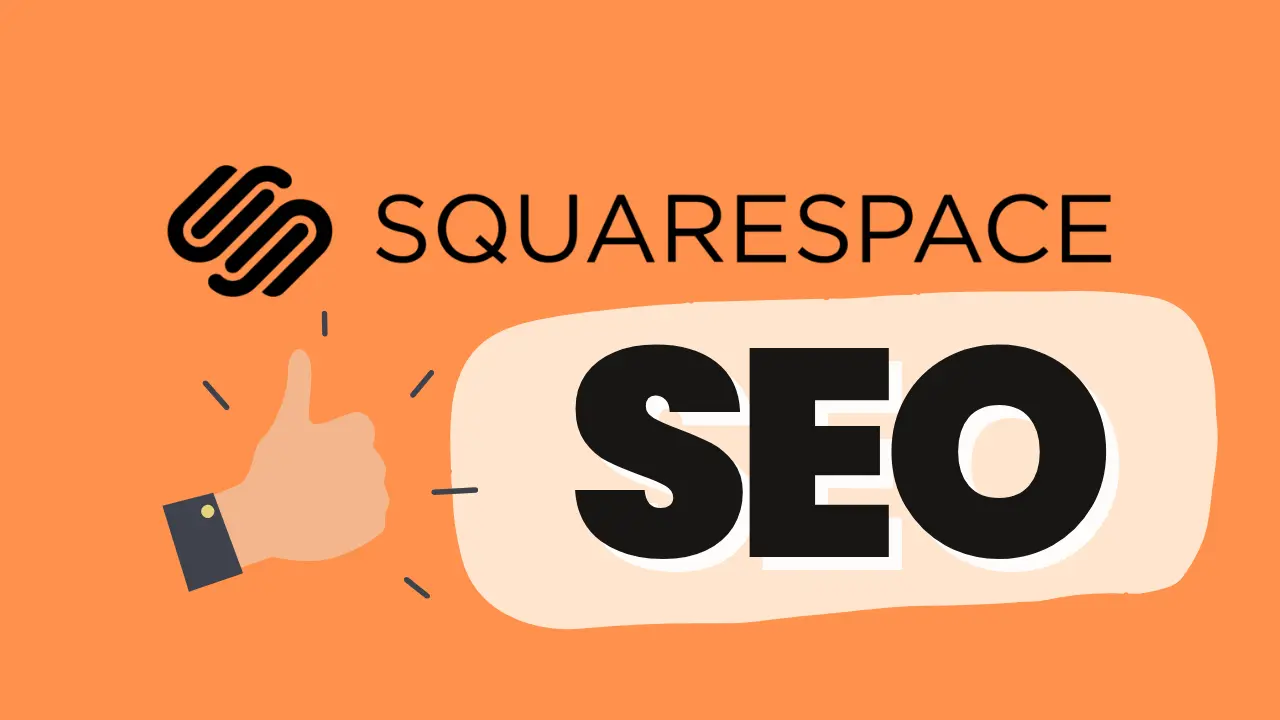Getting more visitors to your Squarespace site starts with good search engine help. This is called SEO. SEO helps your site show up higher in Google Search results. This way, you get more organic traffic, which means no need to pay for ads.
Use the Google Search Console and the right words to make your blog posts easy to find. A simple checklist can help you improve your SEO. It includes setting a clear page title, meta description, and adding alt text for images.
Following these tips can improve user experience and build better content. This will increase the traffic to your site. Start by doing keyword research and using your target word in the URL slugs. Make sure to keep your site updated, too.
With these steps, your Squarespace site can reach more readers and climb higher in search results.
What Is Squarespace SEO?

Squarespace SEO means using simple search engine optimization steps to help your Squarespace website show up in Google Search results.
First, you choose the right keywords. Then, you add these keywords to your page title. You also need to add them to your meta description and URL slugs.
Next, add alt text to images on your site. It’s also important to use clear headings. This makes it easier for search engines to read your web pages. Following these tips can bring more visitors to your Squarespace site.
Why SEO Matters For Squarespace Websites?

SEO is important for your Squarespace website because it helps your site get found by people searching for what you offer.
Here’s why it matters:
- Increases Organic Traffic: Good SEO helps your home page, blog page, and other web pages appear higher in search results. When your site name and site description show up at the top of Google, more people click your link.
- Brings Free Website Traffic: Unlike paid ads, organic traffic from SEO is completely free. Following a Squarespace SEO checklist helps you get more website traffic without spending money on advertising.
- Builds Trust and Credibility: When your Squarespace site ranks high in search engine results, people see it as more trustworthy. Users often think websites on the first page of Google are more reliable than those on later pages.
- Improves User Experience: Using the SEO tab and following best practices makes your site easier to use. This includes adding alt text to images, fixing broken links, and making sure pages load quickly.
- Helps You Win Featured Snippets: A good SEO strategy can help your content appear in featured snippets at the top of Google. These special boxes get lots of clicks and bring even more organic traffic to your site.
- Reaches Your Target Audience: Keyword research and proper SEO optimization help you connect with people who are looking for exactly what you offer. This means better quality visitors who are more likely to become customers.
- Works With Built-in Tools: Squarespace comes with helpful SEO tools like Google Search Console integration, automatic sitemaps, and rich snippets. These features make it easier to optimize your site without needing extra plugins.
- Provides Long-term Results: Good SEO efforts keep working for you over time. Once your pages start ranking well, they can bring steady traffic month after month without extra work.
Can Squarespace Rank On Google?

Squarespace sites can rank on Google if you follow a few simple search engine optimization steps.
First, use the built-in advanced SEO tools: enable automatic sitemaps, create clean URL slugs, and activate free SSL security to show Google your site is safe.
Next, connect your Squarespace site to Google Search Console and Google Analytics so you can track how your pages appear in search engine results and how much organic traffic you get. Then, set a clear SEO title and write a helpful SEO site description for each page.
Finally, add schema markup to your content so Google can better understand your pages’ topics. With these steps, your Squarespace pages can climb higher in Google’s rankings.
How Do I Optimize SEO On Squarespace?

Go to the SEO tab in your site Settings and follow this SEO Checklist:
- Set a clear page title (50–60 characters).
- Write a short meta description (150–160 characters).
- Add descriptive alt text to images.
- Use H1, H2, and H3 headings correctly.
- Keep URL slugs short and match your target keyword.
Is Squarespace SEO-Friendly?

Squarespace is SEO-friendly right out of the box, offering built-in features that make search engine optimization simple and effective. You can easily set your site title, create unique SEO descriptions, and add rich snippets without extra plugins.
Squarespace also provides free SSL security and automatic sitemaps to ensure Google indexes your Squarespace website correctly. By connecting to Google Search Console and Google Analytics, you can monitor your search engine results and track organic traffic.
To maintain good rankings, keep your content fresh, fix any duplicate content, and follow the Squarespace SEO guide for best practices. These tools and habits help your site stay user-friendly and climb higher in Google’s listings.
Essential Squarespace SEO Tips

Here are some Squarespace SEO tips which are as follows:
Research and Use the Right Keywords
Finding the right Squarespace SEO keywords is the first thing you do in SEO. Start by thinking about the words your target audience types into Google Search. Use simple keyword research tools—like Google’s Keyword Planner—to find popular search terms.
Then, pick a few strong main keywords and related secondary keywords to sprinkle naturally into your page title, meta description, and URL slugs. Using the right keywords helps your Squarespace website show up in search engine results when people look for what you offer.
Doing this creates more organic traffic and guides potential visitors directly to your Squarespace site.
Optimize Page Titles and Meta Descriptions
Your page title and meta description are your shop window in search engine results. Keep your SEO title between 50–60 characters and include your target keyword near the front.
For the meta description, write 150–160 characters of clear, helpful text that tells people what your page is about.
Use terms like seo site description, site title, and seo descriptions to reinforce your topic. A well-crafted title and description help Google understand your page and encourage users to click your link, boosting website traffic and improving your search engine optimization.
Use Heading Tags Properly
Headings help both readers and search engines see your page’s structure.
Use one H1 for your main page title, like “Essential Squarespace SEO Tips.” Then use H2s for each major section (such as “Optimize Page Titles and Meta Descriptions”) and H3s for sub-points under each section.
This clear hierarchy makes your web pages easy to read and tells Google which parts are most important. Proper heading tags also help with featured snippet chances in Google Search.
Always include your main keyword or a related Squarespace SEO keyword in some headings for added SEO power.
Update URL slugs
A strong URL slug is short, descriptive, and includes your target keyword. Instead of “mysite.com/p123,” change it to “mysite.com/squarespace-seo-tips.” This simple step makes your site URL easy for people and search engine crawlers to understand.
In your SEO tab, edit each page’s slug to match the page topic and include a key phrase. Short, clear URLs also show up nicely in search results, improving click-through rates. Keeping URL slugs tidy and keyword-focused is a quick win in your Squarespace SEO checklist.
Verify Your Site With Google Search Console
Verifying your Squarespace site with Google Search Console gives you insight into how Google sees your pages.
Go to your Google Search Console account, add your site URL, and follow the simple verification steps. Once verified, submit your sitemap.xml so Google can index your pages more quickly.
Inside Search Console, you can see which keywords drive organic traffic, spot broken links, and fix indexing errors. Using this free tool helps you track your search engine results and improve your search engine optimization over time.
Optimize All Images For SEO
Images make your pages more engaging, but they also need SEO love.
First, compress images so they load fast and boost user experience. Next, rename each file with a descriptive filename, like “squarespace-seo-tips.jpg.” Then add alt text in the SEO tab, describing the image and including a target keyword when it fits naturally.
This helps Google index your images in search results and improves accessibility for visually impaired users. Image SEO can also lead to traffic from Google Images, adding another source of organic traffic to your Squarespace website.
Structure Your Content With Headings
Breaking your content into sections improves readability and SEO. Use H2s for major sections and H3s for details within each section.
Each heading should clearly explain what the following text covers, using simple words and target keywords where it makes sense. This structure helps both readers and search engines scan your page, boosting your chances for a featured snippet.
A clear outline—like “Essential Squarespace SEO Tips” followed by “Research Keywords,” “Optimize Titles,” and so on—creates a logical flow that keeps visitors on your site longer.
Compress Images for Faster Loading
Page speed is a key ranking factor in search engine results. Large, uncompressed images slow down your Squarespace site and frustrate users.
Before uploading, use free online tools or desktop apps to compress images without losing quality. Smaller files load faster, improving your user experience and reducing bounce rates. Faster pages also help you rank higher in Google Search.
In your Squarespace SEO guide, make image compression a regular step before publishing any blog posts or new pages.
Avoid Duplicate Content
Duplicate content can confuse search engines. This can hurt your rankings. It is important that each page on your Squarespace site has a unique SEO description. Each page should also have different text.
If you have similar pages, like service descriptions, rewrite them. Make sure they cover different details or angles. You can use canonical tags in the SEO tab. This helps point Google to your main page. Keeping content unique helps your search engine ranking.
It also makes it clear to Google which page to rank. This keeps your organic traffic from splitting between duplicates.
Include Linking
Linking helps users and search engines find their way around your Squarespace site.
You should add internal links to your blog posts or related pages. This guides visitors to more helpful content. Use simple anchor text that contains a target keyword. It is also good to include external links to trusted sources. This builds trust and adds context to your site.
Both types of links are important for a strong SEO plan. They share page authority across your site, make user experience better, and tell Google that your content is connected to the wider web.
Optimize For Search Engines
You can do more than just change content. Use all the SEO tools that Squarespace offers. Turn on schema markup in the SEO tab.
This adds rich data for products, events, or reviews. Check your site name and title in Settings.
This helps to keep things consistent. Use Google Analytics to check organic traffic. It helps you find pages that need better content. Regularly check your site for broken links or missing alt text.
By mixing these steps with good content tips, you can improve your place in search results.
Keep Your Website Updated
Fresh content makes visitors and search engines happy. You should add new blog posts at least once a month. It is also good to update old pages with new examples or fresh insights. Use your Google Search Console data to check which pages have dropped in rank.
Then, you can revise those pages. Keeping your Squarespace website current shows Google that your site is active. This can help you move up in search results. An updated site also builds trust with your audience. Over time, this brings more organic traffic.
How to Use Heading Tags For SEO On Squarespace?

Using heading tags well helps both people and search engines like Google understand your Squarespace website.
Follow these simple steps:
H1: The Main Page Title
Your H1 is the biggest heading on each page. It tells Google and readers what the page is about. On Squarespace, set your H1 in the page title field under the SEO tab or in the editor’s title area. Include your main keyword—for example, “Squarespace SEO Tips.”
A clear H1 makes your site title strong and guides Google to rank you higher in search results. Only use one H1 per page so search engines know the main topic, which improves your search engine optimization and helps bring more organic traffic.
H2: Section Headings
Use H2 tags for each main section under your H1. H2s split your content into easy parts.
Examples are “Essential Squarespace SEO Tips” or “Optimize Page Titles.” In the Squarespace editor, select the text and choose Heading 2. Use related Squarespace SEO words in H2s. This helps Google understand the layout of your page.
It also shows which parts are the most important. Well-organized H2s help readers skim through your blog posts quickly. This improves user experience and boosts your rank in search engine results.
H3: Subheadings For Detailed Points
H3 tags are used under H2s to give more detail. Examples include “Add Alt Text to Images” or “Write Meta Descriptions.”
In the Squarespace editor, highlight the subheading text. Then pick Heading 3. Use H3s to organize smaller ideas or steps in a list format. Adding a target keyword in some H3s gives an extra SEO boost.
Clear H3s help visitors and Google skim your web pages quickly. This makes it easy to find information fast. Good use of H3 can also increase your chances of a featured snippet in Google Search. This can drive more traffic to your Squarespace site.
Additional Technical SEO Tips

Keep URLs Short and Descriptive
Short and clear URLs help both people and search engines understand your page. Instead of using “www.yoursite.com/page12345,” try “www.yoursite.com/squarespace-seo-tips.” In the SEO tab on Squarespace, you can edit the URL slugs. Make sure they include your main keyword and fit the page topic. Descriptive URLs look good in search results. This makes users more likely to click on them. This easy step improves user experience and boosts organic traffic. It also helps you follow your Squarespace SEO checklist without extra effort.
Optimize Image Alt Text
Alt text is a brief description you add to each image. This helps Google and people with screen readers know what the image shows.
In your Squarespace site editor, click on an image. Then, go to the SEO tab. Type a few words that describe the image.
For example, you could write “child reading blog post on SEO.” Make sure to include a Squarespace SEO keyword when it fits well. Good alt text makes your images show up in search results. It also helps with accessibility and brings more visitors from Google Images.
Enable SSL For Security
SSL, or Secure Sockets Layer, makes your website address start with “https://.” This shows that your Squarespace site is safe.
Squarespace offers free SSL. You just need to turn it on in Settings under Security & SSL. A secure site builds trust with visitors. They can see the lock icon in their browser. Google also uses SSL for ranking websites.
So, enabling SSL can help your pages rank higher in search results. SSL keeps data safe and helps with your SEO efforts.
FAQ’s:
What Are Simple Ways To Do SEO On Squarespace?
Use a simple Squarespace SEO list. First, choose the right words. Then, add them to your page title. Also, include them in your meta description and URL slugs. Add alt text for your images. Use H1, H2, and H3 headings the right way. Link your Squarespace site to Google Search Console. This helps you see search engine results. Fix any broken links you find. Keep your content fresh for better traffic.
How Often Should I Update My Squarespace Content For SEO?
Update your blog posts and pages every month. New, useful content tells Google that your Squarespace site is active.
This helps improve your rank in search results. Use Google Analytics to find pages that need new words. You can also check Search Console for updates on SEO descriptions. Regular updates make visitors and search engines happy.
Which Template Is Best For Squarespace SEO?
Choose a mobile-friendly template. It should load quickly. Make sure it lets you add alt text to images.
Also, it should allow easy editing of URL slugs in the SEO tab. Templates with clear layouts for headings are best. Easy navigation helps users find what they need. This improves user experience and boosts your search engine optimization.
Is Squarespace Good For SEO?
Yes. Squarespace has built-in tools for SEO. These include automatic sitemaps and clean URLs. It also offers free SSL and schema markup. You can link to Google Search Console and Analytics. This helps you track your organic traffic.
Following the best tips from a Squarespace SEO guide will improve your site. It makes it easier for Google to rank your site higher.
Is Optimizing SEO For Your Squarespace Free?
Most SEO tools in Squarespace do not cost anything. You receive basic SEO tools, free SSL, and automatic sitemaps. All of these come at no extra charge. Google Search Console is free too. It works well with your Squarespace site.
Google Analytics is also free and easy to use. You only need some time to complete the Squarespace SEO checklist.
How Do I Add Alt Text To Images On Squarespace For SEO?
In the editor, click on an image. Then, open the SEO tab. You should type a clear and short description. For example, use “squarespace seo tips graphic.” This will help explain the image better.
Also, include a target keyword if it fits well. Good alt text helps Google find your images. It also makes your site easier to use for everyone.
What Are The Downsides To Squarespace, And How Can You Overcome Them?
Squarespace has fewer add-ons than WordPress. It also has less custom code options. You can fix this by using the built-in SEO tools. These tools include schema markup and rich snippets found in the SEO tab. You should use Google Search Console to find and fix issues.
Simple SEO tips can help you grow your organic traffic. This can be done without needing extra add-ons.
How Does Social Media Integration Impact My Squarespace SEO?
Linking your Squarespace site to social media pages helps get more clicks and shares. This drives more traffic to your site.
Social signals do not change Google rankings directly. However, they can help raise organic traffic and brand awareness. You should add share buttons to your posts.
Also, share your blog posts on social media. This will help grow your audience and support your search engine optimization efforts.
Conclusion
Good Squarespace SEO helps bring more free traffic. You can do this without paying for ads. Start with easy steps.
First, do keyword research. Then, set a clear page title and meta description. Also, use alt text for images. Use your SEO tab to add proper heading tags. Keep URL slugs short for better results.
Connect your Squarespace site to Google Search Console and Google Analytics. This will help you watch your search engine results closely. Fix any broken links you find. Enable SSL for security and compress images for faster loading times.
Follow this Squarespace SEO checklist and update your content often. With these simple SEO tips, your Squarespace website will rise in search results. This way, you will reach more readers and grow your website traffic effectively.



